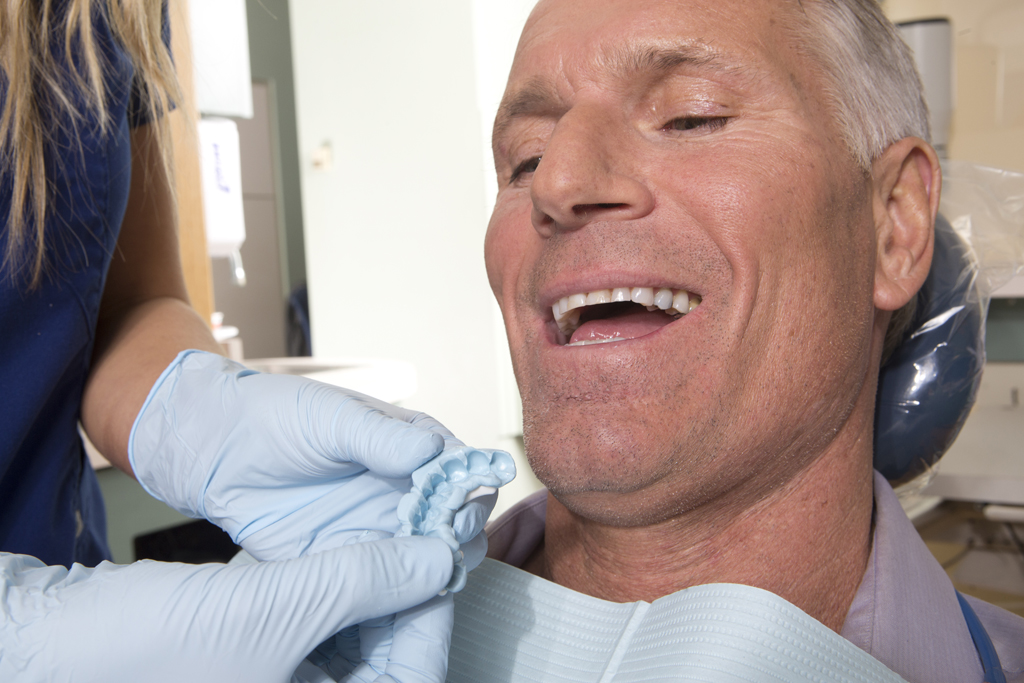
Periodontal disease involves inflamed and compromised gingival tissues. Unaddressed parafunctional clenching causes further deterioration of the periodontal supportive structure. Worn overnight post-operatively on a short-term basis, QuickSplint® keeps the teeth stable and out of occlusion while protecting the gums and fibrin clot or tissue grafting.
For patients undergoing periodontal surgery and/or periodontal scaling and root plaining, abnormal forces associated with bruxism are more damaging due to compromised crown/root ratio. QuickSplint® is provided to modify this damage. QuickSplint® can be relined throughout treatment steps as necessary, extending over several months with ease.
QuickSplint® is an anterior bite plane designed for short-term transitional use. Custom-fit for either the upper or lower arch with fast-set VPS or putty, no adhesives are necessary for its placement or use. QuickSplint® can be trimmed in such a way as to be 100% toot borne, minimizing any concern regarding contact with gingival tissues.
Prior to starting surgery, the dentist or dental auxiliary fabricates a QuickSplint® for the patient and readies the QuickSplint® in the storage container with instructions for use and cleaning. Patients are encouraged to bring the QuickSplint® to their follow-up appointment examine the surface of the QuickSplint® for signs of wear from clenching and bruxing. This information is used to discuss with your patient whether a long-term appliance from you or the referring dentist would be beneficial.
Protection against abnormal bite force immediately following periodontal surgical procedures is ideal to reduce any bruxism-induced pain, injury secondary to muscle hyperactivity and patters of parafunctional behaviors. QuickSplint® should be worn overnight during the healing phase (as determined by the clinician). During periodontal procedures that can result in tooth/bite position changes, coronal splinting or full arch splint therapy can be determined and instituted.
Comfortable for patients to wear at night, QuickSplint® allows the supporting jaw musculature to relax. For a patient who exhibits jaw fatigue during a long procedure, QuickSplint® is prescribed to minimize complications prior to, during and following surgery.
